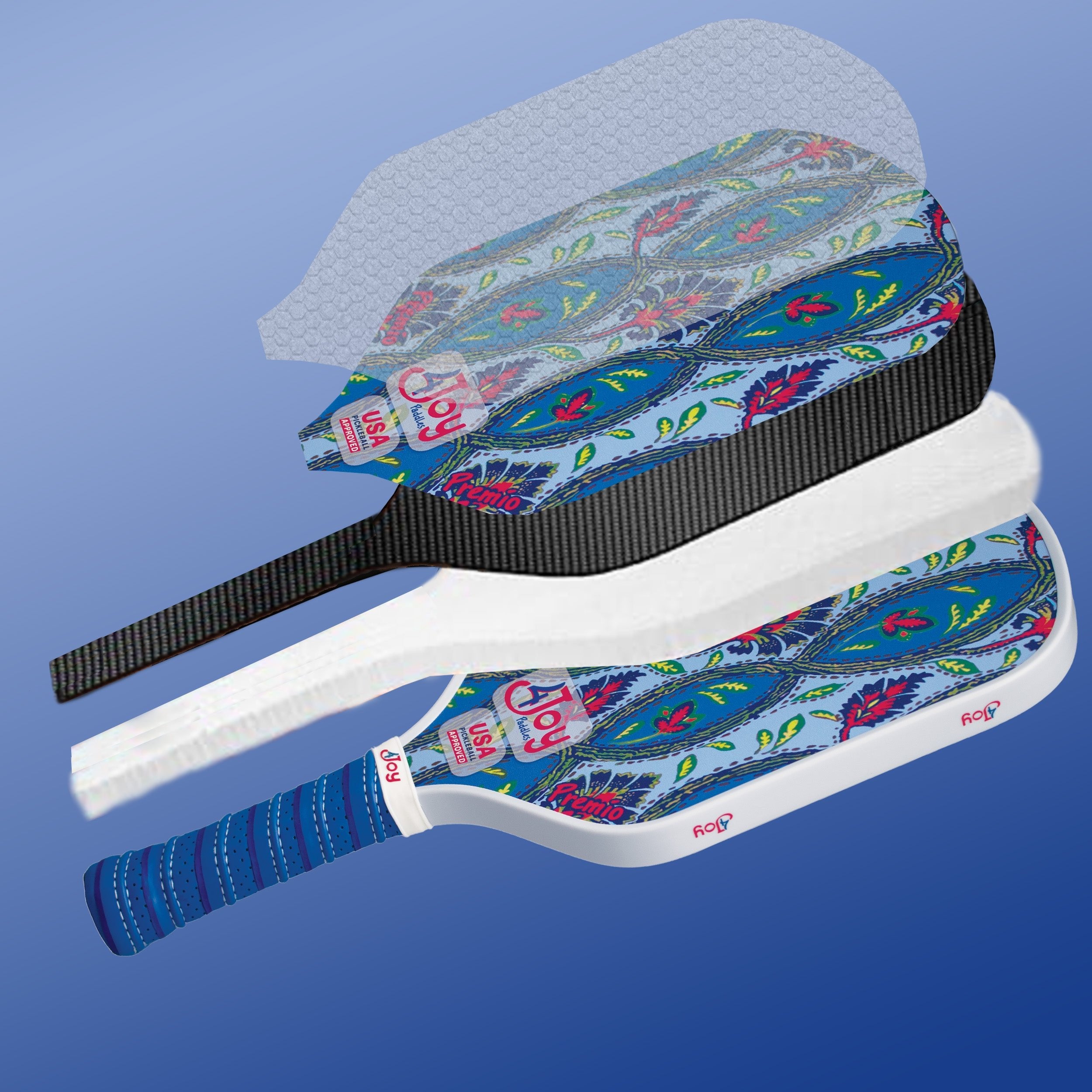|
Pickleball Paddles: Unveiling the Differences in Quality and Performance
|
|
Blog Post- Educating Pickleballers- Answering your questions with each edition. Discover what goes into manufacturing a performance Pickleball Paddle like the Premio Series by 4Joy Paddles. As the popularity of pickleball continues to soar, the market is flooded with a wide array of paddle options, ranging from budget-friendly to high-performance models. In this edition, we're diving into the major differences between a cheap pickleball paddle and a high-quality performance paddle, exploring manufacturing techniques, surface materials, and the preferred thickness for optimal gameplay. Cheap vs. High-Quality Performance Paddles: What Sets Them Apart? The disparity between a cheap pickleball paddle and a high-quality performance paddle lies primarily in construction, materials used, and overall design precision. While budget paddles may offer affordability upfront, they often lack the durability, consistency, and playability that serious players demand. Manufacturing Techniques: Thermoformed and Beyond High-quality performance paddles such as 4Joy employ advanced manufacturing techniques including Thermoforming, which involves heating and molding materials to create a durable, uniform surface. Thermoformed paddles offer enhanced consistency, responsiveness, and durability compared to cheaper alternatives, ensuring optimal performance during intense gameplay. Surface Materials: Fiberglass, Carbon Fiber, and T700 Carbon Fiber The surface material of a pickleball paddle plays a crucial role in its performance and durability. Fiberglass paddles are lightweight and inexpensive but offer very little control causing the ball to pop off the paddle without much directional control for the player, making them difficult for beginners. Carbon fiber paddles, on the other hand, provide superior strength, stiffness, and responsiveness, ideal for all players seeking higher level play. T700 carbon fiber used in 4Joy Premio Series takes performance to the next level with enhanced strength-to-weight ratio, offering unparalleled performance and durability for competitive play. Why 16mm Thickness Matters The preferred thickness of a pickleball paddle is typically around 16mm, striking a balance between power, control, and maneuverability. A 16mm thickness offers consistent shock absorption for consistent ball contact and ample power generation, while still allowing for quick reflexes and precise shot placement. Thicker paddles beyond 16mm (some are over 20mms!) may sacrifice maneuverability, while thinner paddles may compromise power and control. In conclusion, investing in a high-quality performance pickleball paddle equipped with advanced manufacturing techniques and premium materials is essential for players seeking optimal performance, durability, and consistency on the court. Whether you're a casual player or a seasoned competitor, choosing the right paddle can make all the difference in your pickleball play.
Stay tuned for more insights, tips, and updates in the world of pickleball! |

